Let’s be honest: we’re not meant to live in concrete boxes under fluorescent lights. Yet, that’s how most of us spend our days; cut off from nature, staring at screens, in buildings that barely let the sun in. But here’s the thing: biophilic design is flipping that script. And it’s not just some artsy design fad. It’s backed by hard data, human biology, and some seriously impressive global research.
What is biophilic design, anyway?
At its core, biophilic design is about reconnecting people with nature in the spaces where they live, work, and heal. Think sunlight pouring through a window, indoor greenery, natural materials like wood and stone, even subtle nature sounds. It’s about infusing built environments with the textures, colors, forms, and rhythms of the natural world; because that’s what our bodies and minds are wired to thrive in.
Edward O. Wilson coined the term biophilia in the 1980s, describing our innate love for life and natural systems. Today, science has caught up with the sentiment; and it’s shouting the same thing: we need nature. Especially indoors, where we now spend about 90% of our time.
The science: biophilic design = better well-being
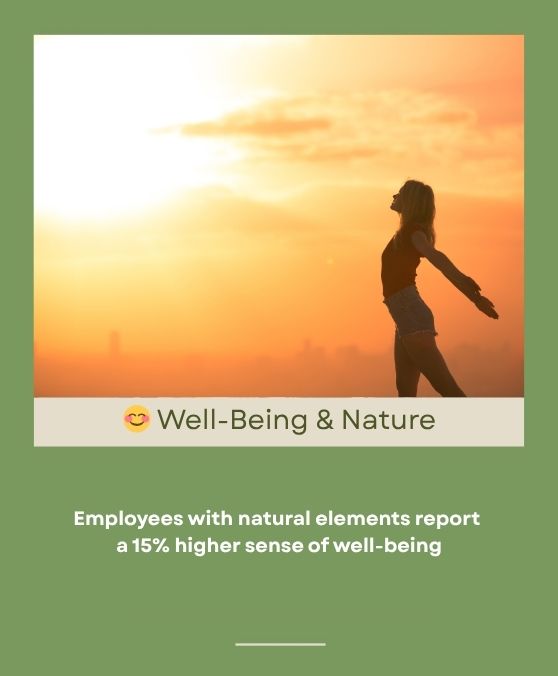
Let’s start with how we feel. Studies show that biophilic design elements like natural light, views of greenery, and live plants lead to:
- 15% higher well-being
- Lower stress and anxiety
- Improved mood and motivation
- Fewer sick days
And this isn’t just anecdotal. Research conducted across 16 countries found that employees in offices with natural elements felt happier, less anxious, and more inspired than those in nature-deprived environments.
Take a real-world example: Genzyme’s LEED Platinum headquarters in Massachusetts. After redesigning with indoor gardens, daylight, and water features, 88% of employees reported improved well-being. That’s not mood lighting; that’s measurable impact.
Productivity gets a nature boost
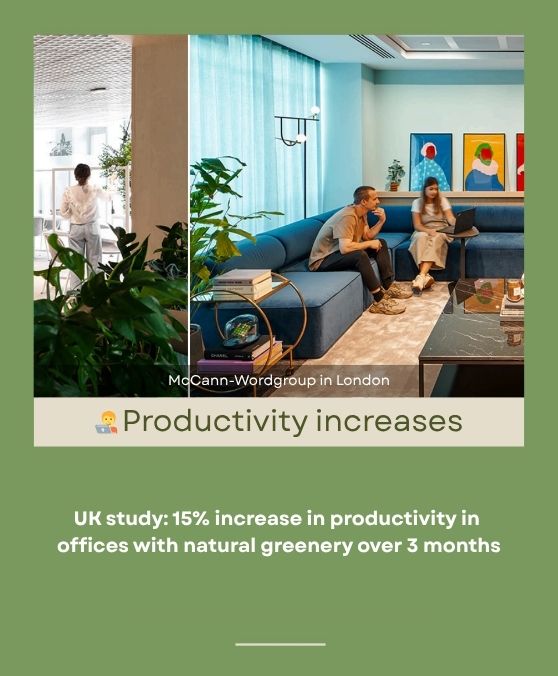
Biophilic design doesn’t just make people feel good; it helps them do good work.
- Offices with natural elements see a 6% boost in productivity
- Workers with nature views complete tasks faster and more accurately
- Exposure to greenery improves focus and reduces mental fatigue.
One UK study found that simply adding plants to a “lean” office environment led to a 15% productivity increase over three months. Natural surroundings engage our senses in a restorative way, helping the brain shift gears and recharge.
Designers and corporations are taking note. Google, Amazon, and Apple have made nature a central pillar of their office environments, not for the ‘gram, but for better performance.
Creativity: inspired by nature
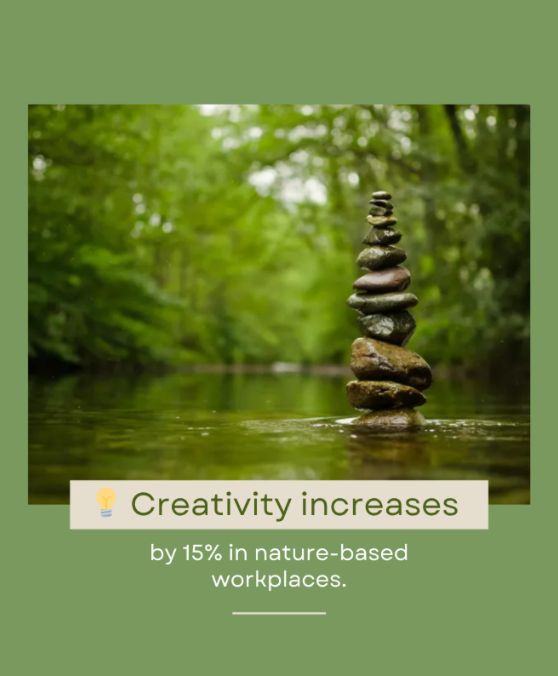
If you’ve ever had your best ideas while walking in the park, you’re not alone. Creative thinking flows more freely when we’re connected to nature.
The Human Spaces global study found that employees working in nature-inspired spaces report 15% higher creativity.
Biophilic design supports this by:
- Offering calming colors like green and blue (scientifically linked to enhanced creativity)
- Introducing organic, non-repetitive patterns that stimulate curiosity
- Incorporating “mystery”; design features that invite exploration and imagination.
This isn’t about turning your office into a jungle. Sometimes, all it takes is a live plant, a skylight, or a textured wood wall to spark something new.
Healing happens faster with Biophilia
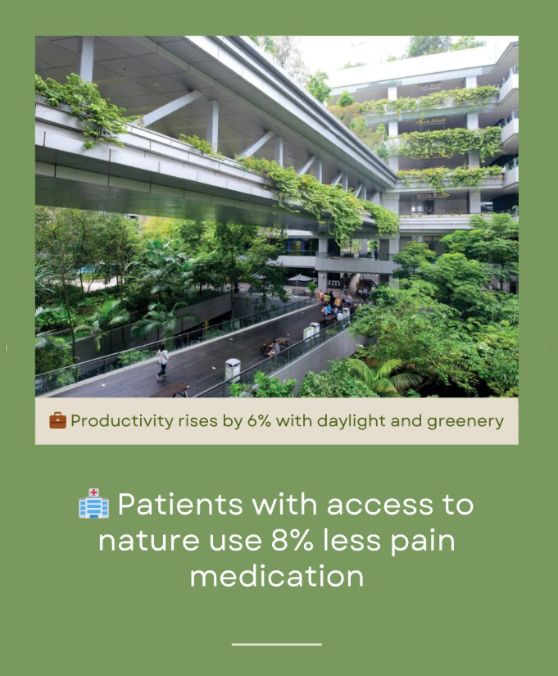
Now, let’s talk about healthcare. Hospitals that incorporate biophilic design aren’t just prettier, they help patients heal faster.
- Views of nature from a hospital bed have been linked to quicker post-surgery recovery
- Exposure to nature reduces pain perception and anxiety
- “Green gyms” and plant-filled spaces in care settings support mental health and social connection.
It’s such a powerful effect that designers now integrate nature elements intentionally into healthcare architecture to support not just the patient, but also the staff’s mental resilience.
Post-pandemic reality: healthier buildings are non-negotiable
The Covid-19 pandemic didn’t invent the need for healthy environments, but it made that need impossible to ignore.
As people return to offices, schools, and public spaces, demand for outdoor air, natural ventilation, and nature-integrated designs has surged. Biophilic design is now expected, not optional.
Architects are reimagining buildings with terraces, cross-laminated timber, and floor-to-ceiling windows. Green walls, circadian lighting, and indoor water features are becoming workplace essentials, not luxury perks.
According to Joseph Allen from Harvard’s Healthy Buildings Program, the focus has shifted for good: “The plexiglass will go away, but the attention to air quality, water quality, lighting, and acoustics will stay.
Why biophilic design just makes sense
Here’s the big picture: biophilic design improves how we feel, how we perform, and how we connect with others. The benefits ripple outward:
- People feel more balanced, inspired, and connected
- Organizations see better retention, productivity, and satisfaction
- Communities become healthier, more sustainable, and more resilient
And as urbanization continues to rise (by 2050, nearly 70% of us will live in cities), integrating nature into the built environment will be essential to our collective well-being.



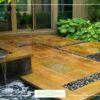

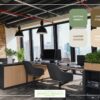

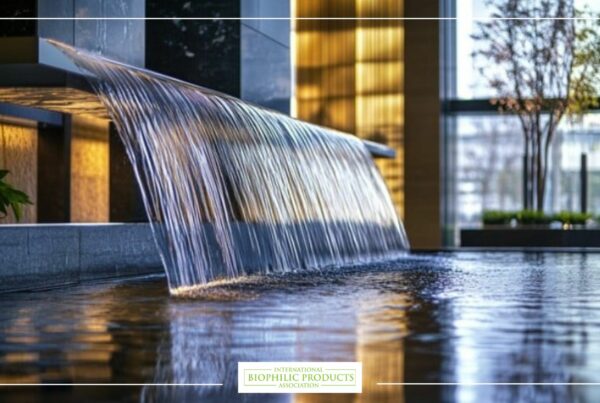
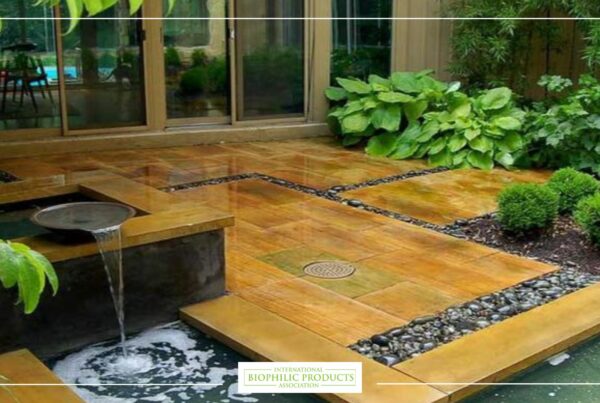
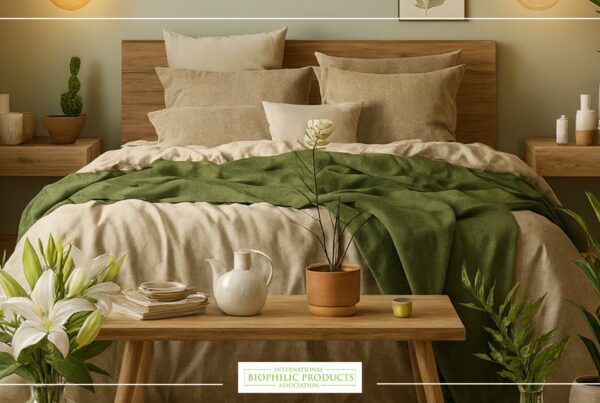

13 Comments